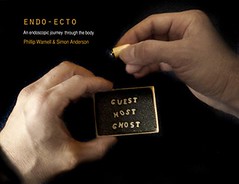Nu på fredag, den 4. september, åbner vi endnu en ny udstilling, nemlig “Primary Substances: Treasures from the history of protein research”.
Det sker ikke her på Medicinsk Museion i Bredgade, men i det nye udstillingsområde i Vandrehallen i Panumbygningen på Blegdamsvej 3 her i København.
Åbningen starter med en times indlæg i Dam-auditoriet kl. 14.00 og så kan man se udstillingen i Vandrehallen fra kl. 15 og fremover.
Udstillingen viser en række ikoniske objekter, som udgør en central del af den biomedicinske kulturarv igennem de seneste to århundreder og dermed bidrager til dannelsen af en biomedicinsk kulturel identitet i dag.
Udstillingen bygger på en række unikke historiske objekter fra museer, arkiver og private samlinger i Danmark, Sverige og England. Sammen danner de et skatkammer, der spejler proteinforskningens udvikling siden Jöns Jakob Berzelius dannede ordet ‘protein’ i 1838.
Udstillingen er sponsoreret af Novo Nordisk Fonden og er blevet til i anledning af åbningen af Novo Nordisk Foundation Center for Protein Research. Den indvier samtidig fakultetets nye udstillingsområde i Panumbygningen.
Udstillingen er lavet af en gruppe herinde på Medicinsk Museion. Jeg har været hovedkurator og har fået hjælp af Laura Maria Schütze med at holde styr på udvalget af genstande og billeder og af Adam Bencard, som har skrevet tekster om proteinmetaforer. Vi har haft et meget fint samarbejde med Jens Bukrinski, som er proteinforsker på Novo Nordisk A/S.
Arkitekt- og opsætningsarbejdet er lavet af Mikael Thorsted, Studio8, med støtte af Johnny Madsen, og det grafiske arbejde af Lars Møller Nielsen, også Studio8 (alle tre var for øvrigt med på Del+Hel). Ion Meyer, Nanna Gerdes og Siri Wahlstrøm her fra Medicinsk Museion har lavet et stort arbejde med at hente og klargøre de ofte temmelig snavsede genstande fra museumsmagasiner og private samlinger i Danmark og Sverige (en ting er lånt fra Cambridge, UK). Og så har Jonas Paludan og Nikoolaj Møbius hjulpet os med et par elektroniske installationer.
Udstillingen ville ikke være blevet til noget uden et omfattende samarbejde med en række institutioner og privatpersoner, som har lånt genstande ud, hjulpet os med billeder, forklaret obegribelige proteinsammenhænge eller bare været hjælpsomme i største almindelighed.
Her er introduktionsteksten til udstillingen:
The word ‘protein’ was introduced in 1838 by the Swedish chemist Jöns Jacob Berzelius. He derived it from the Greek word πρωτειος, meaning ‘first rank’, ‘primary’ etc., because he thought organic substances like fibrin and albumin were “the primitive or principal substances for animal nutrition”.
Since then, generations of chemists, physicists, physiologists and medical researchers have elucidated the structure of proteins and their function in the cellular machinery of the body in increasingly sophisticated detail.
Scientists from the Nordic countries have played an important role in the development of this truly cross-disciplinary field of research – not least in the invention of new analytical methods.
This exhibition displays a selection of artefacts – separation apparatus, measurement instruments, molecular models, results of experimental work, etc – that represent this impressive research tradition in different ways.
We call it an exhibition of treasures, because several of the displayed artefacts have been used in internationally cutting-edge laboratory work; some even for Nobel Prize winning research. They are iconic objects for the formation of a biomedical cultural identity in the same way as Arne Jacobsen’s chairs, lamps and tableware are icons of 20th-century modernism.
The word ‘treasure’ has another meaning as well. Like most other people, scientists collect things – a piece of electrophoretic apparatus, a polyacrylamide gel, a protein model and so forth – which they have used in their daily work in the laboratory. Evocative objects invested with meanings and affects. Things that elicit memories of the life in the lab, its successes and failures. Artefacts that open up memories, like the Madeleine cake did for Marcel Proust in his famous novel À la recherche du temps perdu.
Over time, some of these treasures have ended up in museums. But most of them still remain in the custody of individual scientists and research laboratories.
We have been lucky to be able to draw on both kinds of collections. Many of the objects on display here are simultaneously cultural artefacts and things, which are appreciated on personal and subjective grounds – they balance on the boundary between history and personal memory. They remind us that the historical value and sentimental value of material objects are not easily separated.

